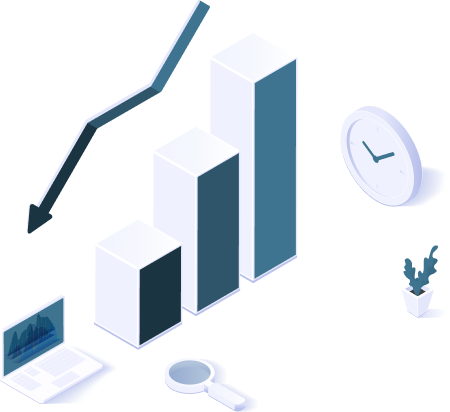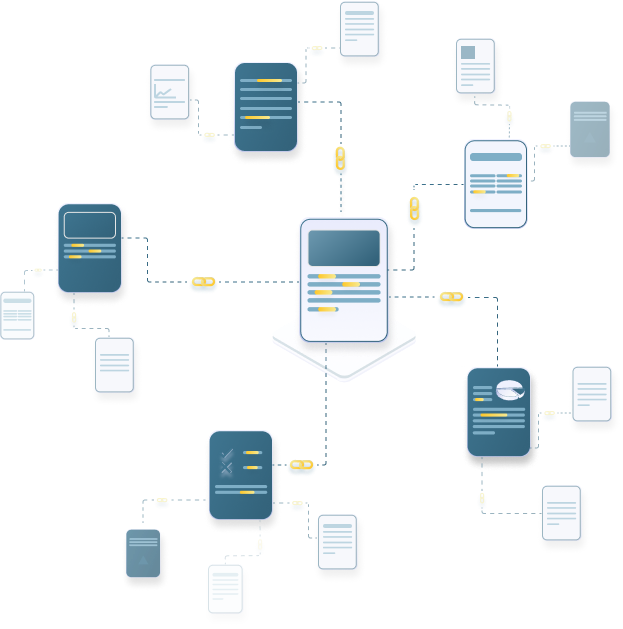When prospects enter your website searching for answers, they sometimes need to explore multiple pages to get a complete view of the solution. However, if your site lacks a clear navigation path, visitors can get lost and struggle to find the information they need.
When this happens, customers become frustrated, return to where they came from and look for a competitor whose website is easier to navigate. That’s a lost conversion opportunity.


This site navigation problem also affects your organic performance. Your team constantly publishes quality content that is thoroughly researched, carefully written and optimized for important keywords.
Yet, these pages receive little to no visibility weeks after you hit publish. It’s as if Google doesn’t even know the pages exist. As a result, your entire website struggles: organic traffic and conversation dwindle, but bounce rate rises.
According to SimplicityDX, this high bounce rate could cost your business up to $40,880 in revenue, which is a lot of money for a small business. Even for big companies, a high bounce rate will ultimately impact revenue.
To improve your site’s navigation and fix your website’s troubles, you need to identify the gaps in your internal linking structure. This means you have to dig through your web archives, pore over your site map and look through those custom spreadsheets you use to manage your internal linking structure.
While doing that, you also need to figure out the relationships between all your pages and determine the right anchor texts for connecting them.
Because if you interlink your site with only the exact keyword every page targets, you risk keyword stuffing. Plus, keywords are contextual, so what seems like a perfect anchor text on one page may misrepresent the content of another.

Unfortunately, this process of finding internal linking gaps and balancing anchor text optimization is tedious and time-consuming (when done manually).
If you manage a large website, it could take you hours every week to reread each article on your site. And even if you decide to outsource the task to a virtual assistant, it’s an additional expense for your business.
The time and money you’re pouring into this task is one you could have spent on more important revenue-generating activities like content creation.
Not to mention that the manual process is also error-prone, so you risk creating irrelevant links or missing important linking opportunities.

But what if there was a better way to identify relevant page connections, create contextual internal links and manage internal linking without wasting time in spreadsheets or spending money on virtual assistants?
What if you had a solution that could automate the entire process even as your content library grows without the headache of keyword stuffing or irrelevant links?
That’s where InLinks comes in.

InLinks is not your usual internal linking tool. It’s a sophisticated solution that uses natural language processing to first understand the meaning of your content and then automate contextual internal linking between related pages.
With it, you can say goodbye to irrelevant links, keyword stuffing, time-consuming spreadsheets, and other internal linking troubles.



By focusing on the underlying meaning of each page and the overarching entities your website talks about, InLinks uncovers linking opportunities that you would ordinarily miss. It then builds connections between related pages using varied anchor texts that make sense for each topic, give context about the linked pages and appear natural.
ZERO keyword stuffing. ZERO spammy-looking links. ZERO irrelevant links.
You’ll also save your team hours of manual labor every month—no more digging through site maps, rereading old content or tracking internal links with massive spreadsheets. With internal linking analytics, you’ll easily monitor anchor text selection and link distribution and know how well-connected your pages are.
InLinks helps you create a cohesive and well-structured website that’s easy for users to navigate and for search engines to understand. Ultimately, you’ll enjoy improved search engine visibility, increased user engagement and conversions.

Get 20 free credits. Add your first 20 pages. Start optimizing your content for entities
Yes. InLinks has AI Writing functionality for English-speaking projects. You can choose whether to use this functionality or not. InLinks is an entity SEO tool that generates content briefs for writers in the form of outlines for them to write the content. It also provides an option to automate content writing using OpenAI (which powers CHATGPT). This final step is optional, and if used, make sure you proofread and verify the content generated.
Talk to us or leave a message using the blue chat button. You can also book a Demo: